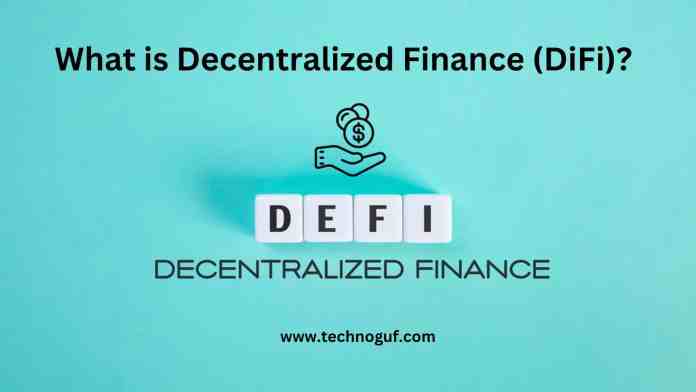In the realm of decentralized finance (DeFi), passive income is no longer a dream but an accessible reality. It’s an ecosystem that embodies financial independence, allowing users to earn returns on their assets.
Embracing the Crypto Evolution: From HODLing to Earning Passive Income with DeFi
Once upon a time, the options for utilizing blockchain assets were relatively restricted. Primarily, they were traded or held in wallets and exchanges, with little opportunity for earning passive returns.
This landscape began to shift significantly with the advent of Decentralized Finance, or DeFi. This new era ushered in a broad spectrum of use cases for cryptocurrencies, offering the potential for amplified returns, even on assets that were merely kept dormant in an account.
Crypto enthusiasts will be familiar with the term “HODL”, a strategy that promotes the retention of tokens despite market fluctuations. While this continues to be a viable strategy, DeFi has presented innovative ways to maximize the utility of cryptocurrency holdings.
Within the DeFi ecosystem, users can harness their idle cryptocurrencies (and other digital assets) and earn passive income through various mechanisms, including lending protocols, liquidity pools, and decentralized exchanges, among others.
Drawing parallels with traditional banking practices of depositing money into a savings account, crypto holders can place their assets into a myriad of decentralized platforms, yielding interest payments and additional rewards. Given that the interest rates in the crypto world often surpass those of traditional finance, the appeal of DeFi is clear.
It is essential, however, to acknowledge the associated risks, such as dramatic market fluctuations, ‘rug pulls’, and the potential insolvency of crypto platforms.
Regardless of these challenges, utilizing DeFi to generate passive income can be a highly rewarding investment approach, especially during the prevailing crypto winter. The options are varied, encompassing staking, lending, yield farming, and liquidity mining.
To navigate this extensive landscape, we present this comprehensive guide.
What is Decentralized Finance (DiFi)?
Let’s first demystify the term DeFi, an acronym for Decentralized Finance. Essentially, DeFi represents financial products and services operating on a decentralized computer network, effectively eliminating the need for a centralized authority or intermediary to facilitate transactions. Peer-to-peer (P2P) exchanges between market players take place here.

DeFi is perceived as a viable alternative to the conventional financial ecosystem, currently managed by banks, central banks, credit unions, governments, and other entrenched financial institutions. Processes such as payments, loans, and transfers, facilitated by DeFi protocols, operate on a blockchain and are executed through smart contracts. These are self-operating computer programs that facilitate the automatic execution of transactions.
With these attributes, this technological innovation enables the establishment of a global financial system with reduced bureaucracy, heightened transparency, improved security, cost-effectiveness, and universal accessibility.
Read More: What is Decentralized Finance (DeFi)? Quick Introduction
What Are The Advantages Of DeFi?
DeFi, similar to cryptocurrencies, is touted as a transformative alternative to traditional fiat-based financial systems. Here, financial activities such as lending, borrowing, and staking can be executed devoid of intermediary intervention. Further, the implementation of smart contracts contributes to rectifying systemic inefficiencies, reducing associated costs, and frequently mitigating the likelihood of debtor default. As it poses a compelling challenge to the monopoly of fiat currencies, DeFi can extend an innovative financial landscape to users globally.
Decoding the Mechanics of DeFi Passive Income
Decentralized finance is a cutting-edge use of blockchain technology that is gaining popularity. For those poised on the brink of the crypto universe but not quite ready to make substantial investments – particularly given the prevailing market conditions – earning passive income through DeFi presents an ideal middle ground.
There are numerous entry points into this domain, from staking digital assets, participating as a liquidity provider, or delving into yield farming, among others. If these terminologies seem a tad complex, don’t worry.
We’re about to dissect each method to generate passive income with DeFi, providing a detailed understanding of each.
Lending and Borrowing Platforms
Lending platforms like Compound, Aave, and Maker are at the forefront of the DeFi revolution. They allow users to earn interest by lending their assets.

- Compound: Compound is an algorithmic, autonomous interest rate protocol. It allows users to earn interest by supplying assets to the platform. The interest earned is directly proportional to the demand for these assets.
- Aave: Aave, an open-source and non-custodial protocol, allows users to earn interest by depositing digital assets into specially created liquidity pools.
- Maker: MakerDAO’s DAI is a stablecoin pegged to the U.S. dollar. Users can generate DAI by depositing collateral assets into Maker Vaults.
Decentralized Exchanges (DEXs)
Trade assets directly from your wallets using DEXs like Uniswap and SushiSwap, eliminating the need for intermediaries. These platforms also provide opportunities for earning passive income.

- Uniswap: Earn money by providing liquidity on Uniswap. Liquidity providers receive a portion of the trading fees based on their pool participation.
- SushiSwap: Similar to Uniswap, SushiSwap offers compensation to liquidity providers in the form of SUSHI tokens.
Yield Farming
Earn high returns through yield farming, also known as liquidity mining. By lending your assets, you can participate in a simple process where liquidity is provided to DeFi platforms, resulting in token rewards.

- Automated Yield Farming with Yearn.Finance: Yearn. Finance automates the yield farming process, efficiently allocating funds across different lending platforms to maximize returns.
Staking
Engage in active staking to fully immerse yourself in a proof-of-stake (PoS) blockchain network. Securely lock up the network’s tokens to contribute to its security and unlock enticing incentives.

- Synthetix: In the realm of decentralized finance (DeFi), Synthetix is a prominent protocol for issuing synthetic assets. Stake your valuable SNX tokens to become an essential participant in the network. Earn additional SNX tokens as a reward, enhancing your earning potential and strengthening your stake in the ecosystem.
Liquidity Pools
Liquidity pools represent invaluable collections of tokens securely locked within smart contracts. These pools play a vital role in streamlining trading activities by ensuring ample liquidity, serving as a cornerstone for a wide range of DeFi applications.

- Balancer: Empowering users with unparalleled control, Balancer offers a unique opportunity to establish liquidity pools consisting of up to eight different assets. By actively contributing liquidity to these pools, users have the potential to earn BAL tokens as a rewarding incentive, further strengthening their involvement in the ecosystem and capitalizing on the value of their assets. Embrace the power of Balancer liquidity pools and dive into a world of enhanced trading possibilities.
Understanding the Distinctions: Staking, Yield Farming, and Liquidity Mining
Staking involves earning rewards by holding specific cryptocurrencies. In Proof-of-Stake (PoS) based blockchains, stalkers serve as validators, ensuring transaction accuracy and bolstering the platform’s security and liquidity.
Yield farming, on the other hand, is a service provided by decentralized exchanges (DEX) to ensure healthy levels of token liquidity for buyers and sellers. This DeFi strategy involves users contributing their funds to liquidity pools and earning rewards for enabling network operations.
While yield farming focuses on maximizing yield, liquidity mining prioritizes network integrity while allowing users to contribute to shared liquidity pools, fostering a robust ecosystem.
Conclusion
Decentralized Finance (DeFi) offers ample opportunities for passive income. Utilize strategies like lending, staking, yield farming, and providing liquidity to generate consistent returns with your crypto assets. As DeFi evolves, it brings innovative ways to earn passive income.
Just like in traditional finance, research and due diligence are essential before investing in DeFi platforms. As we move towards a decentralized future, earning passive income through cryptocurrencies becomes more accessible and appealing. Achieving financial independence in the digital world is full of potential; it’s about making informed decisions with the right assets. Happy investing in the DeFi world!
Frequently Asked Questions (FAQs)
What is DeFi?
Financial services that run on a decentralized network without the use of middlemen are known as decentralized finance or DeFi. Using blockchain technology, DeFi offers services like lending, borrowing, and earning interest in a more accessible, transparent, and cost-effective way.
What are the advantages of DeFi?
DeFi offers numerous advantages including increased accessibility, reduced cost, heightened transparency, and improved security. It allows users to engage in financial activities without any interference from intermediaries. Furthermore, smart contracts used in DeFi systems help address systemic inefficiencies and often minimize the risk of default.
How does DeFi passive income work?
Passive income in DeFi is earned through several methods such as staking digital assets, providing liquidity, or participating in yield farming. These methods allow users to generate a steady income stream without actively managing their assets.
What is staking in DeFi?
Staking involves participating in a proof-of-stake (PoS) blockchain network by holding and locking up the network’s tokens. In return for contributing to the network’s security and operations, users are rewarded with additional tokens, generating passive income.
What is yield farming in DeFi?
Yield farming, also known as liquidity mining, is a method to earn rewards from cryptocurrency holdings. In simple terms, it involves lending your assets on the blockchain network and earning maximum returns in the form of fees or governance tokens.

